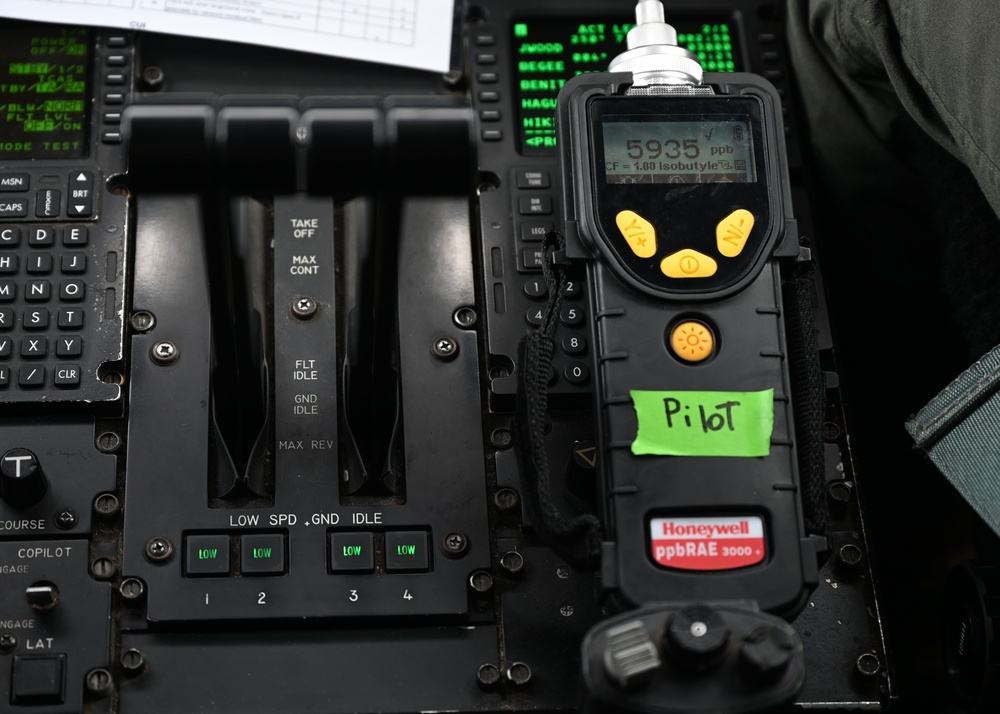
A piece of equipment reads the amount of chemical particles that are in the air inside a C-130J Super Hercules at Little Rock Air Force Base, Arkansas, July 23, 2020. Chemical, Biological, Radiological, and Nuclear analysts from the 711th Human Performance Wing at Wright-Patterson Air Force Base conducted an experiment that looked to determine how long it takes for a chemical contaminant, such as tear gas, to purge itself from an aircraft as well as potential best practices to reduce the amount of chemical particles in the air in the most efficient way possible. (U.S. Air Force photo by Airman 1st Class Jayden Ford)
| Date Taken: | 07.23.2020 |
| Date Posted: | 07.29.2020 15:10 |
| Photo ID: | 6290124 |
| VIRIN: | 200724-F-XY725-1014 |
| Resolution: | 5634x4024 |
| Size: | 1.51 MB |
| Location: | LITTLE ROCK AIR FORCE BASE, ARKANSAS, US |
| Web Views: | 14 |
| Downloads: | 7 |

This work, Experiment enhances C-130’s competitive edge against CBRN threat [Image 7 of 7], by SSgt Jayden Ford, identified by DVIDS, must comply with the restrictions shown on https://www.dvidshub.net/about/copyright.